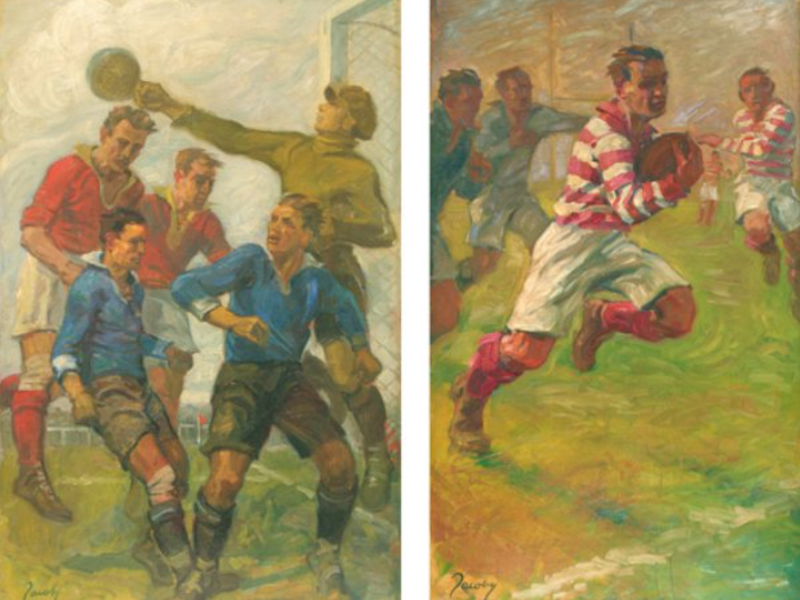
Jean Jacoby’s Corner, left, and Rugby. At the 1928 Olympic Art Competitions in Amsterdam, Jacoby won a gold medal for Rugby. (Collection: Olympic Museum Lausanne)
At the 1912 Summer Olympics in Stockholm, American Walter Winans took the podium and waved proudly to the crowd. He had already won two Olympic medals—a gold for sharpshooting at the 1908 London Games, as well as a silver for the same event in 1912—but the gold he won at Stockholm wasn’t for shooting, or running, or anything particularly athletic at all. It was instead awarded for a small piece of bronze he had cast earlier that year: a 20-inch-tall horse pulling a small chariot. For his work, An American Trotter, Winans won the first ever Olympic gold medal for sculpture.
For the first four decades of competition, the Olympics awarded official medals for painting, sculpture, architecture, literature and music, alongside those for the athletic competitions. From 1912 to 1952, juries awarded a total of 151 medals to original works in the fine arts inspired by athletic endeavors. Now, on the eve of the 100th anniversary of the first artistic competition, even Olympics fanatics are unaware that arts, along with athletics, were a part of the modern Games nearly from the start.
Click here to read more about this story, or find more history about the Olympics online in the Smithsonian Magazine.
